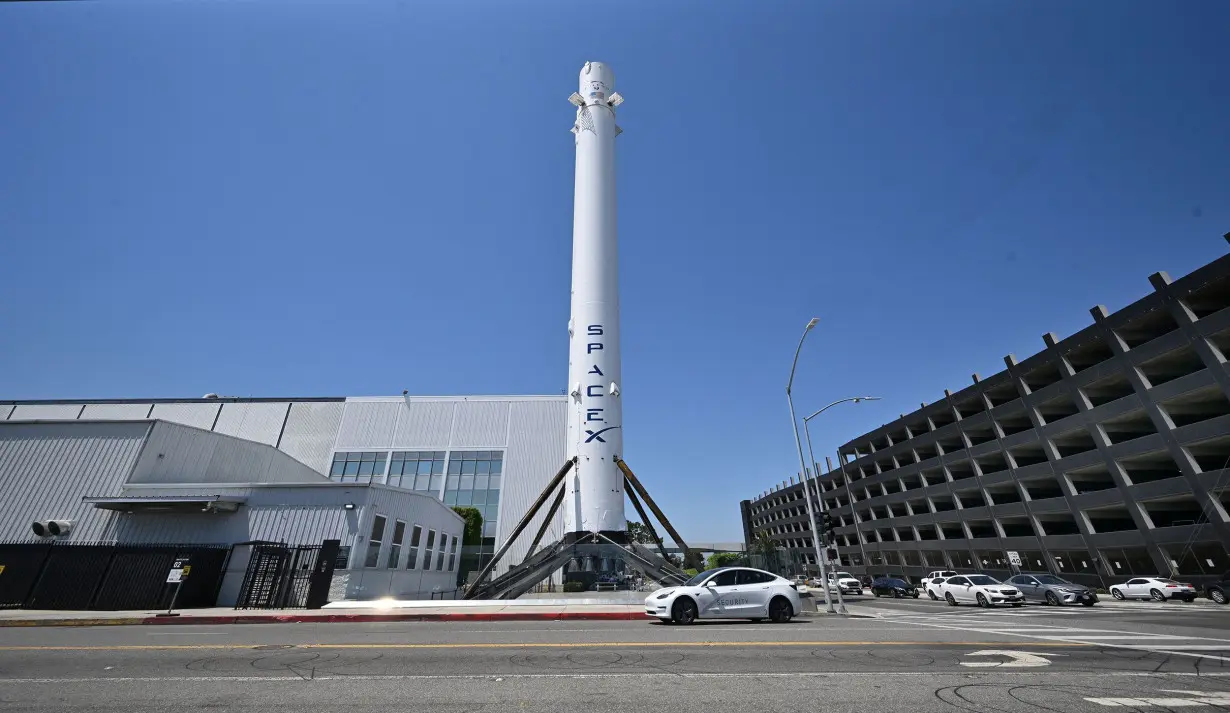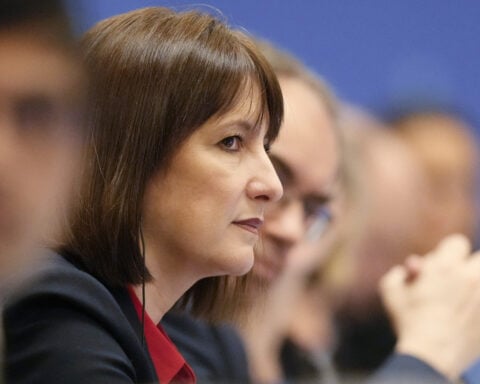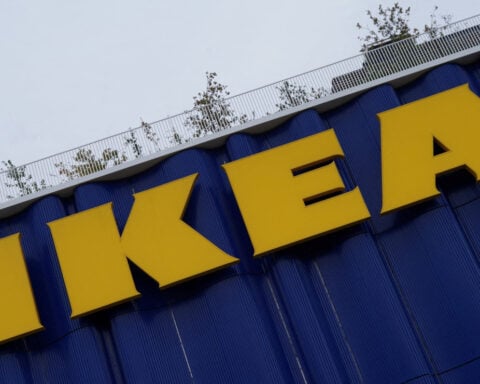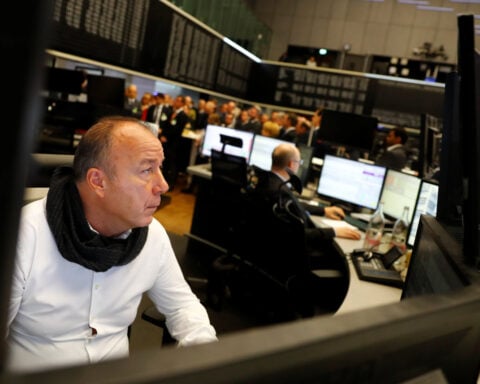(CNN) — SpaceX’s Falcon 9 rocket — the most prolific launch vehicle in the world — is ready to return to flight after suffering a mission-ending failure during a routine journey earlier this month.
The Federal Aviation Administration, which licenses commercial rocket launches and assesses mishaps, said Thursday that it had determined there were “no public safety issues” involved when Falcon 9 failed in orbit on July 11, paving the way for the rocket to make a rapid return to flight.
“This public safety determination means the Falcon 9 vehicle may return to flight operations while the overall investigation remains open, provided all other license requirements are met,” according to the FAA.
On its website, SpaceX has already revealed that it will put the Falcon 9 back to work as soon as Saturday, launching a batch of Starlink internet satellites.
That would make SpaceX’s return to flight extremely rapid, with only about two weeks of down time. For comparison, the Falcon 9 has been grounded for months at a time after prior failures or mishaps, the last of which occurred in 2016.
Approval to resume Falcon 9 launches also means that SpaceX is back on track to return to its routine but crucial work launching astronauts to the International Space Station. SpaceX’s 10th such trip — carried out on behalf of NASA — is slated to take flight in August. That mission is dubbed Crew-9, and NASA said Friday it’s on track to launch “no earlier than” August 18.
“We’ve been following along, step by step with that investigation that the FAA has been doing,” Steve Stich, NASA’s commercial crew program manager, said Friday. “SpaceX has been very transparent.”
Stich added that Crew-9 will launch after the conclusion of the inaugural crewed test flight of Boeing’s Starliner spacecraft. That vehicle has been at the ISS weeks longer than expected as ground teams have worked to understand several issues that plagued the first leg of its flight.
Four astronauts will launch inside a SpaceX Crew Dragon capsule atop a Falcon 9 rocket for the Crew-9 mission: NASA’s Zena Cardman, Nick Hague, Stephanie Wilson, and cosmonaut Alexsandr Gorbunov of the Russian space agency, Roscosmos.
During a news briefing Friday, Hague said that he is “extremely confident in the (SpaceX and NASA) team.”
“And I’m excited to strap onto the rocket when the team decides it’s time to go,” Hague said, adding that SpaceX has been transparent with the astronauts about the issue from the time it occurred.
SpaceX also has plans to launch a history-making private astronaut mission, called Polaris Dawn, that will send billionaire and philanthropist Jared Isaacman and three crewmates to orbit aboard a Falcon 9 to conduct the first spacewalk by private citizens. That mission had been slated to take off as soon as this month but is now on track for “late summer,” or August, said Sarah Walker, SpaceX’s director of Dragon mission management, on Friday.
What happened to Falcon 9
The Falcon 9, which is the smallest vehicle among SpaceX’s fleet of rockets, is the linchpin of the US rocket industry. Already in 2024, it has carried out more than 60 missions. No other rocket comes close to being as active.
A Falcon 9 had launched a group of Starlink satellites out of California on July 11 shortly before the mishap occurred.
The first leg of the mission appeared to proceed smoothly, with the Falcon 9 using its first-stage booster — the bottommost part of the rocket with nine engines that provide the initial burst of power at liftoff — to propel itself toward space.
But the second stage of the rocket, which is designed to fire up after the first stage falls away and power the satellites to their final destination in orbit, failed abruptly.
SpaceX later revealed there was an oxygen leak on that second stage. (Liquid oxygen or LOX is a commonly used as an oxidizer or propellant for rockets.) That led to what SpaceX CEO Elon Musk described at one point as an “RUD” — or “rapid unscheduled disassembly,” a phrase SpaceX typically uses to refer to an explosion.
Despite the mishap, the satellites were safely deployed, Walker said. The rocket sensed an engine issue, she said, and deployed the satellites. But they were put into a much lower orbit than intended, meaning they would likely be dragged out of space by Earth’s gravity very quickly.
The FAA, which routinely oversees investigations after such mishaps, told CNN in an email it found that “all debris from the anomaly has reentered and there continues to be no reports of public injury or public property damage.”
SpaceX had asked the FAA on July 15 to evaluate the threat to public safety, allowing the company to return to flight even if the broader investigation — which is meant to pin down the “root cause” of the mishap and identify how to correct the problem — is not complete.
In a post on X, the social media site formerly known as Twitter, SpaceX indicated it already understood that root cause.
Walker also explained on Friday that SpaceX determined the leak was caused by a crack in a line attached to a pressure sensor, which endured some wear and tear from engine vibrations and the fact that a clamp that was meant to strap it down had come loose. The oxygen leak caused “excessive cooling” of engine parts, which left the rocket without enough fuel to burn properly, Walker said.
Walker said the issue would not have occurred on a SpaceX mission carrying NASA astronauts because those missions have a different flight profile.
But SpaceX does not plan to “assume that issue is isolated,” Walker added, noting that is why SpaceX still audited the entire system.
The company cited the rocket’s extensive flight history as one reason the company is “able to gather unprecedented levels of flight data and are poised to rapidly return to flight.”
The-CNN-Wire
™ & © 2024 Cable News Network, Inc., a Warner Bros. Discovery Company. All rights reserved.

 Germany's economy shrank for the second consecutive year in 2024
Germany's economy shrank for the second consecutive year in 2024
 Italy, Albania, UAE sign deal for energy subsea interconnection
Italy, Albania, UAE sign deal for energy subsea interconnection
 European shares advance as bond yields ease; soft inflation powers UK stocks
European shares advance as bond yields ease; soft inflation powers UK stocks
 Bayern Munich signs US youngster Bajung Darboe from LAFC
Bayern Munich signs US youngster Bajung Darboe from LAFC
 Novak Djokovic breaks a tie with Roger Federer for the most Grand Slam matches in tennis history
Novak Djokovic breaks a tie with Roger Federer for the most Grand Slam matches in tennis history
 China's RedNote: what you need to know about the app TikTok users are flocking to
China's RedNote: what you need to know about the app TikTok users are flocking to








